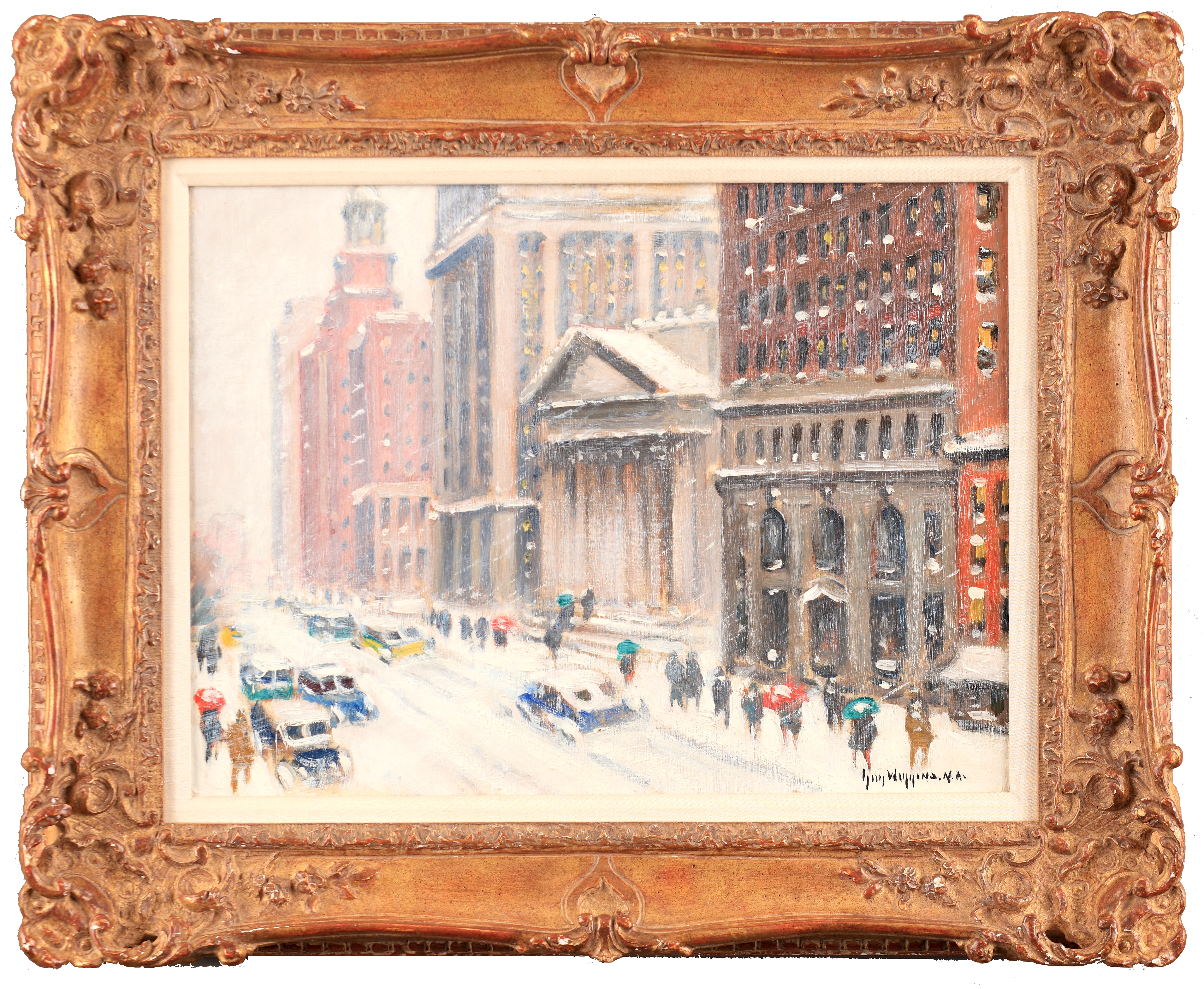Winter on Wall Street, NYC
Medium: Oil on canvas
Dimensions: 13 x 18 inches
Signed
SOLD
Winter on Wall Street, NYC
Medium: Oil on canvas
Dimensions: 13 x 18 inches
Signed
SOLDGuy Carleton Wiggins adopted the bright palette and lively brushwork of the impressionist movement, and is best known for his New York City snow scenes and landscapes in the area of the Impressionist colony of Old Lyme, Connecticut.
The son of artist John Carleton Wiggins, Guy Wiggins was born and grew up in Lyme where his parents had purchased a country house and studio. Beginning 1917, both father and son gave their addresses as Old Lyme, which by then was an unofficial artist colony, dating from 1903 when Childe Hassam began painting there.
Wiggins spent part of his childhood in England and on the Continent where his father, landscape artist John Carleton Wiggins, took his family during the 1890s. Back in America, Guy entered the Polytechnic Institute in Brooklyn to study architecture. Soon he decided to become a painter and transferred to the National Academy of Design, beginning a life-long affiliation with that institution.
Wiggins studied with noted artists of the Old Lyme Colony who were developing their own style of impressionism – combining the French traditions and emerging American technique. He may have begun to paint his signature winter scenes after an unsuccessful attempt to paint a sunny landscape in his New York studio in winter.
His combination of the bright colors of urban life with flickering snowfall and the city’s massive architecture (aided perhaps by some earlier training he had had in architecture) proved extremely successful. His New York cityscape painting, Metropolitan Tower, purchased by the Metropolitan Museum of Art in 1912, supposedly made Wiggins the youngest American artist to have work enter that museum’s permanent collection. “In the painting, the tower dominates the middle distance, but it is seen through an atmospheric haze created by the winter weather and by smoke coming from the numerous buildings that surround it.” (Pfeil).
He won prizes from the Connecticut Academy of Fine Arts, the Salmagundi Club and the Art Club of Philadelphia, and in 1917, he won the prestigious Harris Bronze medal from the Art Institute of Chicago.
Wiggins set up his canvas in a variety of geographical locations including Long Island and the Bay of Fundy in Canada as well as around New England.
In 1937, Wiggins established his own art school in the nearby town of Essex. Wiggins was a painterly Realist who worked on a wide variety of subjects: robust and well-loved scenes of New York City in the snow or in the spring sunshine, still-life, delicate flower compositions and the street-scenes and landscapes of foreign lands. Cartier regularly reproduces his New York winter scenes for its “Holiday Card Collection”.
Some other critics have felt that his repeated application of a similar approach to snow scenes in various locales of New York became somewhat repetitive in contrast to the spontaneity of his Old Lyme summer landscapes.
Both his New York snow scenes and delicate New England scenes are valued by collectors. Wiggins had an exhibition of his works in Richmond in 1921, painting “Washington Square in Winter” specifically for this exhibition. The painting was subsequently purchased by the museum, and the Richmond Art Museum’s archives contain original correspondence with the artist.
He had many one-man and group shows throughout the east and is listed in Who’s Who in American Art and Who’s Who in the East. He was a member of the National Arts Club and the Salmagundi Club, both in New York. Wiggins’ work is included in many collections and two of his paintings hang in the White House.